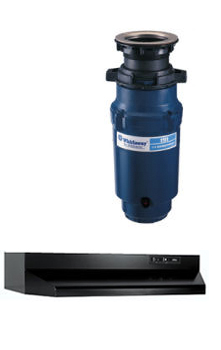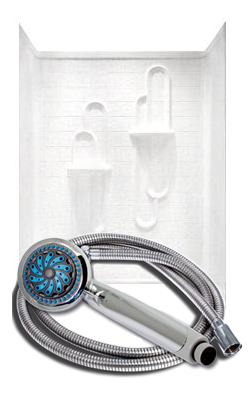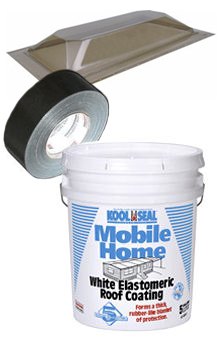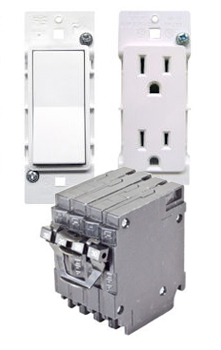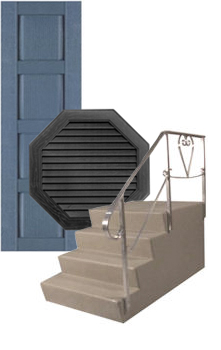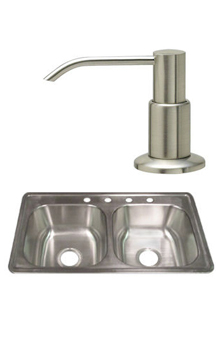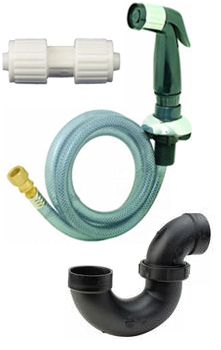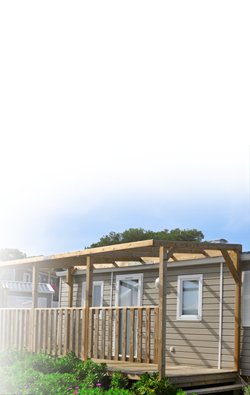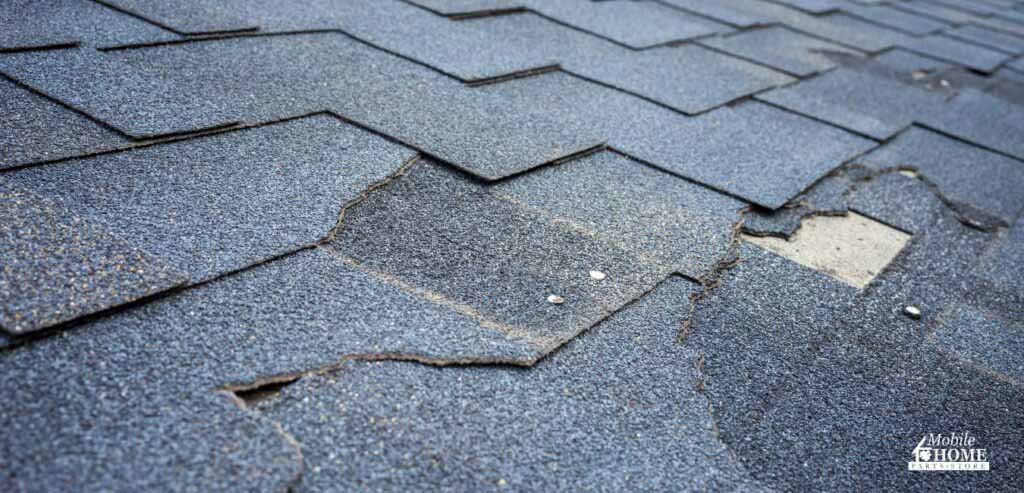
We’ve all been there:
- The dreaded drip-drip sound
- An unsightly stain spreading across the ceiling
- That unmistakable feeling of a droplet landing on your head inside your cozy mobile home
Roof leaks are a nuisance at best and a major hassle at worst. If you’ve noticed a leak, don’t panic! Mobile home roof repair is achievable, and with some know-how, you can fix it in no time. In this article, we’ll dive into the common causes of roof problems and guide you through repairing them.
Common Causes of Roof Problems
Whether you have a shingle, metal, or flat-top roof, these are the common problems you are likely to face:
Leaks Caused by Moisture
Frequent rain or heavy snowfall are the culprits behind mobile home roof leaks. Over time, repeated exposure to moisture can weaken the roof’s structure, leading to gaps where water can seep through.
If the roof is not angled, pooled water can accumulate, further exacerbating the issue. Once the moisture penetrates under the ceiling, it can cause the roof to leak, leading to mold and rot spreading across the entire roof.
Debris
Overhanging trees, nearby construction, or even strong winds can accumulate debris on your roof. This can include leaves, twigs, or even larger branches. When debris accumulates, it can trap moisture against the roof, leading to damage over time.
Periodically clean your roof, remove any debris you find, and consider trimming trees close to your mobile home to reduce the chances of branches falling onto the roof. For added protection, consider a roof coating which can serve as an additional layer against the elements.
Small Creatures
Believe it or not, small creatures like birds, squirrels, or insects can cause damage to your mobile home’s roof. These creatures can cause damage by burrowing, nesting, or simply scratching the surface, loosening the sealant, and causing harm to your roof in the long run.
Ventilation and Condensation
When a mobile home doesn’t have proper ventilation, it can lead to a buildup of moisture inside the structure, which can further lead to mold and rot. This can weaken the roof’s structure over time, making it more susceptible to leaks. Moreover, joints that are not sealed properly can also cause ventilation problems in the ceiling, potentially costing you a pretty penny down the road.
Material Breakdown
Just like any structure, the roof of your mobile home can suffer from wear and tear. Shrinkage, splitting, and blistering of roof membranes can lead to cracks on the upper layer, making the roof susceptible to leaks. However, even roof coatings that protect the membrane have been known to crack and stretch, allowing water through the membrane. The breaks can make the roof susceptible to increased damage when not corrected.
Poor Installation
Not all mobile homes are built equally. Sometimes, mistakes in the installation process can lead to future problems, including leaks. Issues like improperly sealed seams, misaligned roofing materials, or even low-quality roofing materials can all contribute to roof damage.
Signs of a Mobile Home Roof Leak
Ideally, there should be a visual clue that points to the presence of a leak. Regardless of whether your roof is pitched or flat, you should inspect your home’s interior and exterior for certain signs. Here’s what to watch out for when searching for a leak on your shingled mobile home roof:
Sagging, Dark Spot and a Peeling Ceiling
Dark marks on the ceiling of your mobile home often signify a moisture problem, be it from a leak or condensation. Suppose you notice your wallpaper or vinyl-coated wall panels beginning to peel. In that case, it’s essential to closely inspect the surrounding area to pinpoint the cause, which could be due to a leak or condensation.
A Ray of Light
If you can see light peeking through a crack from anywhere in your home, it must be sealed. If light can enter, so can water.
Finding and Repairing Mobile Home Roof Leaks
Finding the source leak is often the most challenging part of any roof repair. Start by inspecting the inside of your home. Look for water stains on ceilings or walls. Once you identify a possible source, go to the roof for a closer look. Remember, water can travel, so the leak might be away from the interior damage.
Common Roof Leaks

Vent Cracks and Leaks
Vents that are aged or showing cracks might require replacement. Inspect plastic roof vents for fractured casings and metal vents for split seams. Frequently, leaks arise from compromised flashing, defective or absent shingles, or issues at the ridge cap (where the two sides converge). Though it might seem like a good idea to seal it with caulk, that solution won’t last long. The best approach is to replace any damaged vents.
Rubber Boots
The boot that surrounds your plumbing ventilation pipes can become cracked or damaged. Vent boots for plumbing can be made of plastic, metal, or a combination. Inspect plastic foundations for any splits and metal ones for separated seams. Next, look at the rubber seal that encases the pipe. This could be decayed or ripped, leading water to seep into the home along the pipe’s pathway. If you encounter any of these issues, purchasing a new vent boot as a replacement is advisable.
Flashing
Leaks around flashing can be challenging to find and repair. Flashing is best known as roofing material that runs vertically. A wide range of structures penetrate the rooftop surface and must be “flashed” with compatible roofing products.
One small opening can allow a significant amount of water inside, especially during hard rain. If the metal strips surrounding the plumbing vents, gas lines, pipes, ductwork, or HVAC units are damaged or open up, it’s time to replace the flashing.
Remove the old flashing from the designated area, and apply the new one. However, suppose you’ve attempted to reseal the flashing multiple times, and the leakage persists. In that case, it’s best to consult a roofing expert to examine your roof and fix the flashing. Flashings should be checked at least twice per year.
Skylights and Caulking
Skylights are big-time leakers. Over time, their seals will start to deteriorate. Regular inspections of skylights are crucial, and it’s recommended to replace them if the frames show damage or the seals appear visibly degraded.
Mobile Home Roofs with Shingles
Since modern manufactured homes typically have shingled roofs while older mobile homes often feature flat roofs, we’ll address each type separately, finding and repairing leaks.
Loose, Damaged, or Missing Shingles
Check your roof for missing, loose, or damaged shingles and replace them immediately. Also, ensure no nails or other sharp objects can create a hole in your shingles.
Suppose there is no visible damage or missing shingles. In that case, the end of your roof’s lifespan might be approaching their lifespan’s end.
Assess the state of the asphalt shingles by slightly bending a corner of one or two shingles on the roof’s sun-exposed side. If they snap instead of bending or look gray and swollen, the roof will need to be replaced.
Flat Mobile Home Roofs
Maintaining the flat roof to stay waterproof demands regular attention and care. Regular roof inspections are essential to identify signs of wear and damage on the roof membrane. Common indicators of potential or existing leaks include tears, cracks, blistering, or water accumulation.
Blisters or “bridging” in the Roof Membrane
Flat roof membranes are prone to blistering and “bridging.” Blisters appear like bubbles beneath the roof membrane. As the adhesive weakens over time and the membrane expands and contracts, these bubbles or wrinkles emerge, indicating that the membrane is approaching its lifespan’s end.
On the other hand, bridging occurs when the membrane shrinks, putting stress on its seams and flashings. If not addressed, both bridging and blistering can result in the membrane cracking and eventually tearing over time.
Damaged Roofing Membranes
Membranes may develop cracks, blisters, or tears. When this happens, water can collect underneath them. This leads to the roof insulation getting soaked, making it challenging to pinpoint the source of the leakage. Periodic checks of the roof membrane are essential for preventing leaks.
Ponding
Unlike pitched roofs, ponding is a very common occurrence on flat roofs. Areas that display ponding should be closely examined. Some degree of ponding is anticipated. Yet, if rainwater lingers on the roof for over 48 hours under suitable drying conditions, it requires vigilant observation. The longer the water remains on the flat roof, the greater the risk of leaks. Older flat roofs are particularly prone to this issue.
Mobile Home Roof Leak Repair
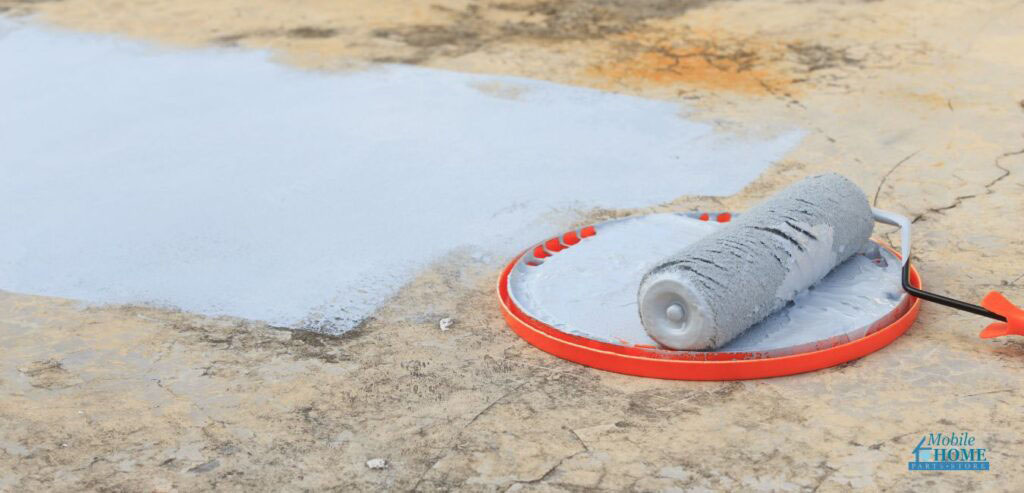
Once you’ve identified the source of the leak, follow these steps:
- Clean and Prepare: Before you start, ensure the roof is clean. Remove any debris, and if there’s mold or algae, clean it with a recommended solution.
- Inspect and Repair Roofing Material: Check for cracks, broken shingles, or any other signs of damage. Depending on your roof’s material, you might need to replace entire sections or patch up small areas.
- Seal Roof Seams: Roof coating solutions are available specifically for mobile homes. Apply a generous amount to seal the seams and provide an added layer of protection.
- Patch Holes or Tears: Products like “Peel & Seal” from a Mobile Home Parts Store are handy for quick fixes. As the name suggests, peel and stick to the affected area. Ensure the surface is dry and clean before application.
- Check Ventilation Systems: Make sure your roof’s ventilation is working correctly. Clear any blockages and ensure vents are damage-free.
- Test for Leaks: It’s wise to test once you’ve made your repairs. Use a hose to spray water on the repaired areas and check inside to ensure no water is coming through.
Stay Drip Free with Mobile Home Parts Store
Your mobile home is a sanctuary, a place of comfort and safety. Ensuring that its roof remains intact and leak-free is crucial for the well-being of the structure and its inhabitants. It’s true that, with a bit of knowledge and the right tools, many roof repairs can be DIY. And guess what? The best place to get everything you need is the Mobile Home Parts Store.
We have all the parts, supplies, and tools you’ll need to ensure a durable and long-lasting repair. Don’t let a minor drip turn into a major problem. Be proactive, and make sure you have the right supplies on hand. So, the next time you hear that dreaded drip-drip, remember that Mobile Home Parts Store has you covered!
Tags: mobile home, Mobile Home Parts Store, mobile home repair, Mobile Home Roof Coating, mobile home roof repair, peel and seal


